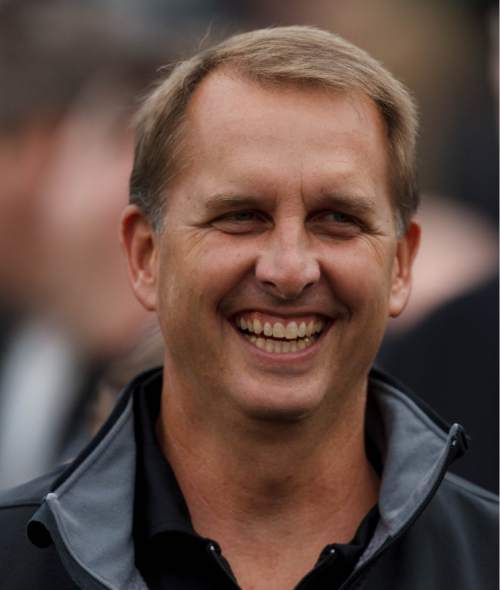This is an archived article that was published on sltrib.com in 2016, and information in the article may be outdated. It is provided only for personal research purposes and may not be reprinted.
As someone who closely follows the football coaching profession, I'm crediting BYU's Kalani Sitake with an innovative method of assembling his initial staff via fan voting.
What, that's not how he did it?
Sitake's group resembles a selection of Cougar fans' favorite players at each position, headlined by Heisman Trophy-winning quarterback Ty Detmer. Collectively, these assistants have only a few years of coaching experience at other FBS schools.
The staff's composition is partly a function of the fact that coaching at BYU requires some local knowledge. Here's a telling quote: "They've come up through the system. It's not a culture shock to them."
That's what Utah coach Kyle Whittingham said about his 2012 staff, the group he famously described as having "high energy, great chemistry, no egos."
And then the Utes went 5-7 that season, posting their first losing record in 10 years.
At considerable risk of making any BYU/Utah comparison, I would say the Utes' 2012 example is instructive in Sitake's case. At the time, I labeled Whittingham's approach "more of a BYU model," with none of those nine assistants having previously coached in a Power 5 conference. I also said that if it worked, Whittingham would have revolutionized the profession.
It sort of worked, definitely not to a revolutionary degree. Utah's 2012 staff included three newly hired coaches — Ilaisa Tuiaki, Dan Finn and Sharrieff Shah — with Brian Johnson being promoted to offensive coordinator, three years after quarterbacking the team.
Whittingham would acknowledge the staff's lack of experience a year later by bringing in Dennis Erickson as co-offensive coordinator. Finn later was replaced as offensive line coach by Jim Harding, who has upgraded the position.
Having worked as an attorney before changing professions, Shah has grown into the job of coaching cornerbacks very nicely. He learned a lot from Sitake, then Utah's defensive coordinator. Shah's example provides some assurance that Reno Mahe potentially can develop into a good coach of BYU's running backs.
Like that Utah staff, Sitake's group is built for recruiting with an extensive BYU background, and it is culturally diverse. Some of these guys can learn how to coach, although there undoubtedly will be some tough assignments in 2016 against veteran staffs representing BYU's opponents.
A couple of factors work in Sitake's favor. The hiring of Steve Clark as tight ends coach is a good move. As a former offensive coordinator at two Big Sky Conference schools, he has experience that can help Detmer in the meeting room. Detmer's time as a backup quarterback in the NFL gives him a unique background, but being fully responsible for designing a scheme and calling plays is different.
Clark's arrival also enables former Southern Utah head coach Ed Lamb to work on defense. That's important, because if anyone is genuinely qualified to coordinate the defense, it is Lamb — not Tuiaki, who coached on offense at Utah in 2012 before moving to the defensive line with the Utes and then Oregon State. As the safeties coach, Lamb can have considerable input into the defensive scheme, and Sitake also will be as involved as he wants to be.
Sitake may find, as Whittingham did, that his staff needs to be upgraded for the Cougars to compete against the Power 5 teams on their schedules. Then again, these formerly great players may turn out to be coaching stars as well. How long will they remain popular in Provo? That's the test.
Twitter: @tribkurt





